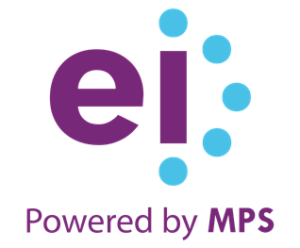Use eLearning To Enhance Your Leadership Training
An organization’s success hinges on many factors. Good leaders drive performance by creating high performing teams that generate good business results. As a result, leadership development training is a significant part of the overall training in most organizations. These trainings need to be designed to not only meet current business goals, but also future goals. Well-designed leadership trainings increase employee engagement, enhance productivity, and improve retention levels. Most significantly, they help nurture talent as you ready the organization for its future goals. Without this investment, you will not have a strategic or competitive advantage.
None of us are born leaders, and the way to acquire leadership skills is through multiple channels like:
- On-the-job (experiential) learning
- Structured, formal learning
- Semi-structured (self-directed) learning
- Social or collaborative learning
- Mentoring
- Coaching
In this article, I outline how you can use eLearning-based training to enhance the impact of your leadership training. I begin with a set of challenges associated with the design and delivery of leadership trainings and then show you how eLearning can come to your rescue.
Challenge 1: Too Many Things To Do, Too Little Time
Given the business dynamics, leaders have a lot on their plate and there just isn’t enough time to invest in learning. But the bottom line is that in today’s fast-paced world, the need for continuous learning is essential to sustain success.
The answer lies in using techniques like eLearning to provide leadership trainings that enable them to effectively juggle between their jobs as well as find time to build or hone their leadership skills.
How eLearning would help: eLearning stands out as the preferred mode of learning on account of its strengths that mesh well with the way today’s learners want to learn. The key benefits eLearning offers for leadership training are:
- It provides anytime, anywhere access.
- It can be used to provide a personalized learning plan.
- It offers learners the flexibility to move across devices (smartphones or tablets to laptops or desktops).
- It is self-paced (provides control to the learner to drive the pace to learn).
- It is available on demand.
- It provides training and other learning resources at the time of need, within their workflow.
- Once built, it can be easily deployed to reach a wider audience.
- It provides consistent messaging.
- It can be updated easily and redeployed quickly.
- It enables organizations to easily track the learning journey.
Furthermore, eLearning enables organizations to address the needs of a multi-generational workforce and factor for globalization challenges with ease.
Challenge 2: Once Is Not Enough—I Need More And Often
Successful leaders make an ongoing investment in learning to stay ahead and lead by example. You cannot create leaders by investing in only discrete trainings during the year. Instead, there is a need to provide learning pathways that can connect with learners all through the year and equip them on many levels. They should also foster a spirit of continuous learning.
How eLearning would help: eLearning can be used to provide leadership trainings that will help employees as follows:
- Offer bite-sized, action-oriented formal training that features multiple nuggets connected through a learning path.
- Provide ongoing connects through nuggets for practice and mastery.
- Reinforce acquired learning and avoid the “forgetting curve” from setting in.
- Push challenges periodically to stimulate review or further learning.
- Provide ongoing updates to keep them in sync with the latest info.
- Recommend additional reading.
Challenge 3: One Size Does Not Fit All—How To Address The Multiple Facets Of Leadership Training
Leadership trainings aren’t for senior talent alone. It needs to be offered at several junctures during their career, and these training needs require different approaches at each level. Take a look at 3 key levels to see what is needed at each level.
- Early to mid-career leadership training
This is aligned to early talent spotting and for grooming them for Team Leads and entry-level managerial positions. The focus at this level is primarily on increasing self-awareness (helping them move from individual contributors to leads/managers) as well as how to motivate and build high-performing teams. - Mid-career leadership training
At this level, the focus shifts toward improving skills to lead larger teams (may include leading a business unit) and skilling them to understand organizational and business dynamics. At this level, they also need to be upskilled to craft business strategies. Here, training alone would not suffice and there must be provisions for social or collaborative learning, as well as coaching and mentoring. - Senior-level leadership training
Given the position (senior executive or CXO position), the training needs change dramatically. They now include complete business planning, competition analysis, and business strategy. Aspects, like innovation, are necessary for an organization to create and sustain a differentiator. At this level, the training needs to have a mix of formal learning and self-directed learning. It also needs to have a blend of coaching and mentoring.
How eLearning would help: Although eLearning cannot address all the leadership training needs listed above, it can be certainly used to form the core.
- You can design a learning and performance ecosystem to offer leadership training. This will support a multi-modal approach and will go a long way in fostering a culture of self-directed and continuous learning.
- Techniques like microlearning can be used to create bite-sized and action-oriented learning nuggets that are connected through a learning pathway for each level.
- You can leverage microlearning to offer highly personalized learning pathways (mapping to career pathways).
- You can use the diverse formats of microlearning (including video-based learning) to offer trainings that would resonate with learners at each level. These diverse formats can address different learning styles and the varied preferences of the multi-generational workforce.
- They can have suitable interjections of other approaches like shadowing, collaborative learning, and coaching and mentoring to complete the spectrum.
Some of the eLearning strategies that can be adopted for leadership training across the 3 levels are:
- Complex branching simulations
To stimulate critical thinking and decision making - Case studies
With scenarios for analysis and application - Scenarios/Challenges that reflect the job dynamics
To help relate to the situations and gear up for problem-solving in a safe environment
Investing in effective leadership training will certainly ensure better alignment to your business mandate and this will help you sustain your business and strategic advantage.
As I have shown in this article, you can use eLearning to create a successful and effective leadership training. I hope I have provided adequate pointers that you can use. If you have any specific queries, do contact me or leave a comment below.
Read More:
- eLearning Trends In 2019: How To Use Them To Enhance Your Learning Strategy
- 7 Examples Of How To Use Mobile Learning To Scale Your Employee Training And Manage Growth
- 4 Easy Steps To Ensure The Success Of Your Learning Strategy In 2019
- How To Leverage mLearning To Train Your Multigenerational Workforce
- Free eBook: 12 Examples That Prove Mobile Learning And Microlearning Is An Essential Combination To Meet Your Learning Mandate







